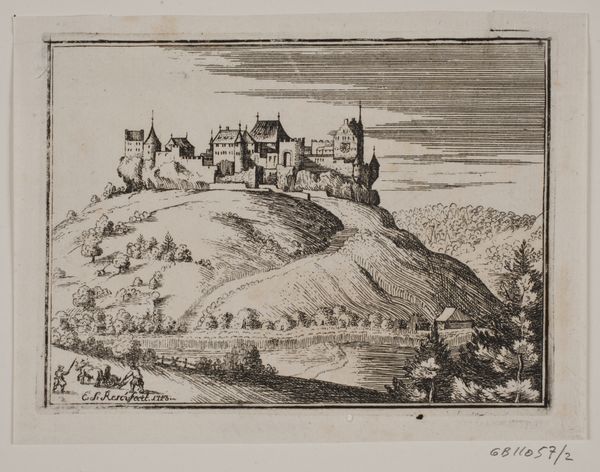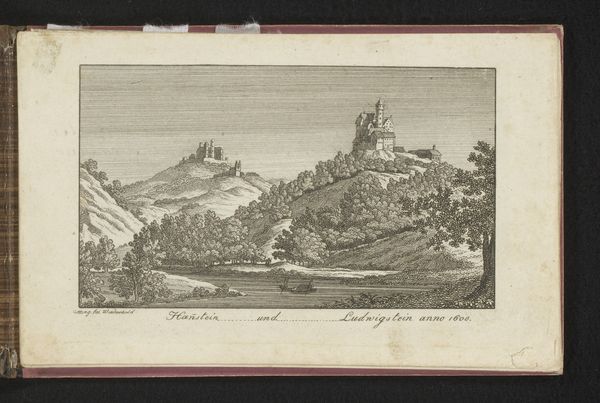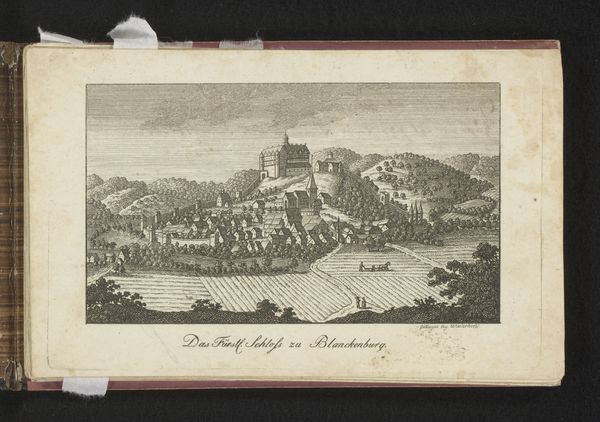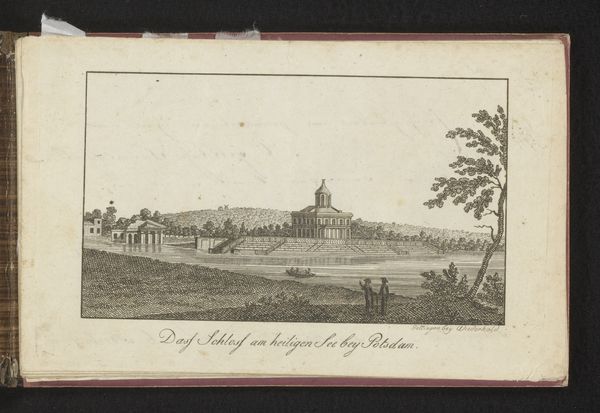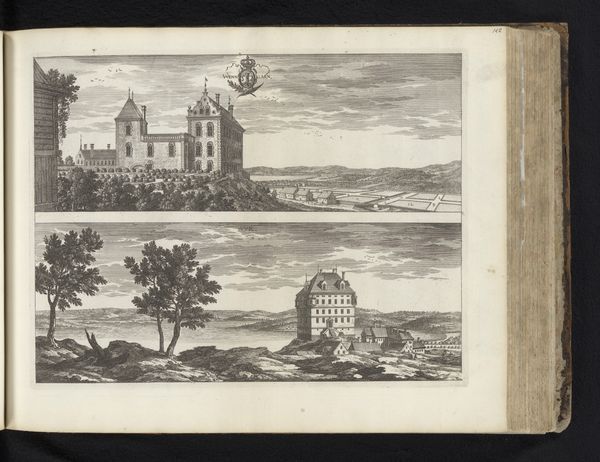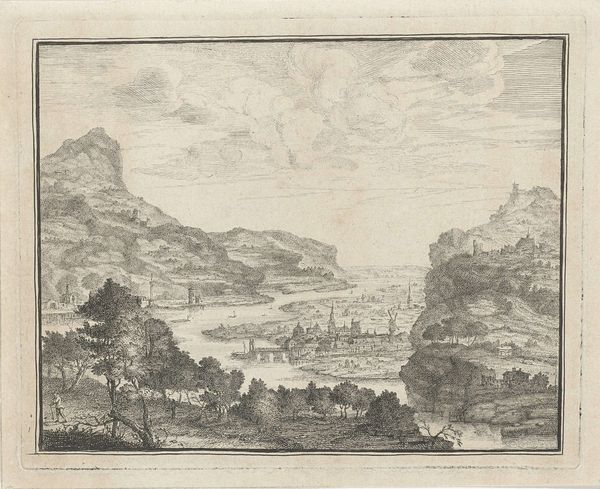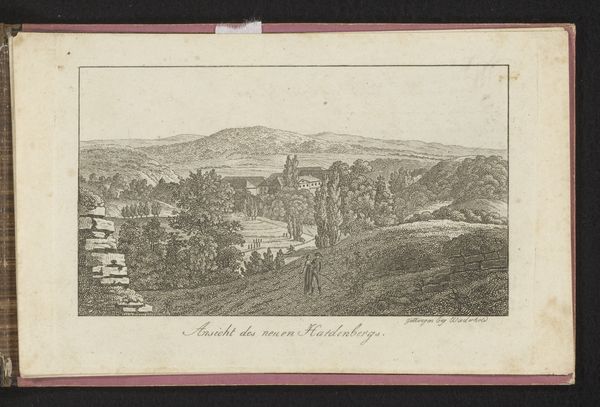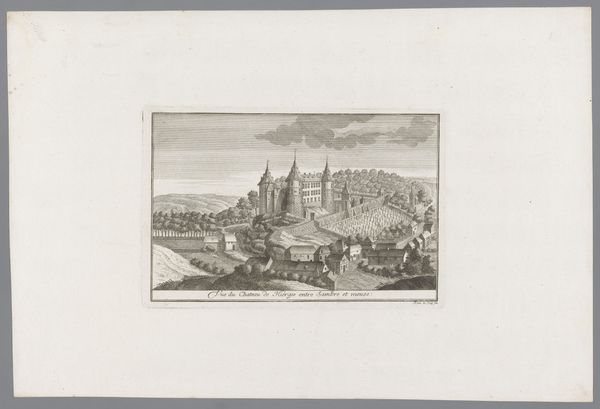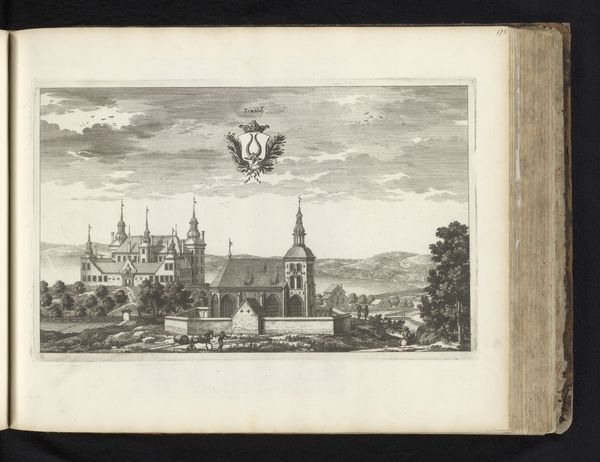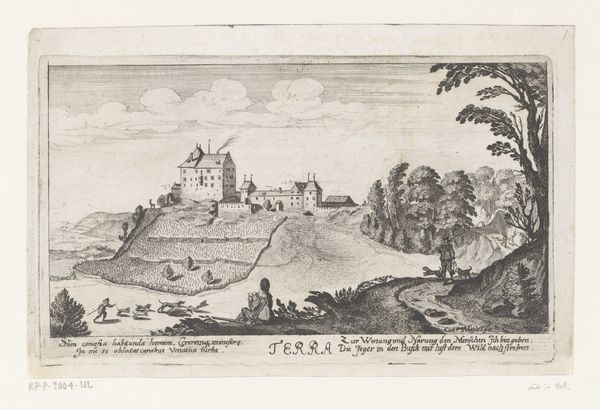
drawing, print, pencil, engraving
#
drawing
# print
#
landscape
#
coloured pencil
#
romanticism
#
pencil
#
cityscape
#
engraving
#
watercolor
Dimensions: height 105 mm, width 171 mm
Copyright: Rijks Museum: Open Domain
Curator: Immediately, the texture pulls you in, doesn’t it? That layered feeling, almost like looking through time itself. Editor: Exactly. It feels melancholic, a bit brooding, yet peaceful at the same time. It’s a beautifully rendered cityscape, isn't it? Curator: It is indeed. What we are looking at here is "Gezicht op de burcht van Götz von Berlichingen," which translates to "View of the Castle of Götz von Berlichingen," made sometime between 1770 and 1816. Editor: Berlichingen... Was he the guy with the iron hand? Curator: Precisely! A famous knight. So, thinking about that era, this piece situates itself within a context of shifting power, burgeoning national identities, and romantic ideals surrounding history. Castles represented power, of course, but also a connection to the past, especially potent themes at that time. Editor: Ah, totally. I get it. Like a stage set for a historical drama. I wonder if the artist intended for us to contemplate feudalism. I like to imagine stories swirling around it... what do you make of the figures in the lower right, almost like an aside to the main action. Curator: These figures do ground the scene. They bring an everyday reality to the castle's imposing presence. They serve as a crucial reminder that castles are never really apart from those it protects... or represses, right? We are reminded to view history from an intersectional viewpoint. Editor: True. And there’s such care in rendering the light, how it hits the stone and filters through the trees. It feels alive despite the antiquated setting, perhaps because of its detailed romantic esthetic! Almost timeless. Curator: Precisely! Art like this compels us to consider not only the scene depicted, but also the lens through which we, as viewers, approach it. The narrative behind the imagery, you know? What we choose to emphasize or overlook, that says so much about our contemporary moment. Editor: Makes me think about how history’s told, or, more importantly, *who* gets to tell it. All history painting has agenda, intended or not... even quiet pastoral prints. This one sings of change, don't you agree? Curator: Indeed. And those quiet moments of personal reflection are what historical art, even unassuming prints like these, allow us to cultivate. Editor: It's more than a pretty picture, definitely.
Comments
No comments
Be the first to comment and join the conversation on the ultimate creative platform.
